Sinéad Smyth
This body of work consists of an interrelated series of expanded paintings, sculptural installations and photographs. These works use industrial plastic polythene as their base material. The expanded paintings are placed within the rural landscape and the gallery. They are photographed within these locations.
Through my making process, I am exploring ways to re-interpret plastic as an artistic material by stretching and consolidating its physical and associative potentials. I use various techniques to transform this material altering its shape, texture, and colour while also responding to the inherent agency of the material.
Over the COVID-19 pandemic and the enforced lockdown, I found myself working from my family home in rural Ireland. During this time, I found myself looking at the Irish rural landscape's visual, physical, and social characteristics and found that I was responding to my rural surroundings through my art practice.
Inspired by the vernacular and the materials in the rural landscape, I began using polythene as a base material for my expanded paintings. This single-use plastic is designed to be used and thrown away, leading to a build-up of materials in our oceans and landfills. I wanted to explore the idea of plastic waste as a form of assemblages that accumulates over time, transforming the landscape. As plastic is viewed as a waste product that consumes and destroys our natural habitat, I wanted to explore the potential that plastic has as an artistic material, while also bringing attention to some of the political and environmental aspects inherent in the work.
For this body of work, I have produced an assemblage of expanded plastic paintings, which have focused on colours and tones associated with the rural landscape. I have installed these pieces in several locations, both in the rural landscape and in a galley environment. When installed outdoors, the expanded paintings engulf and transform their surroundings which become unrecognisable. However, when this same expanded painting is removed from the rural environment and is installed in the gallery, the colours appear more vibrant. The work demands to be viewed within a different art historical context.
I wanted to produce an artwork that responds to the different environments in which it is situated, where the artwork observes the features and characteristics within each environment to act as a support and contextualise the work.
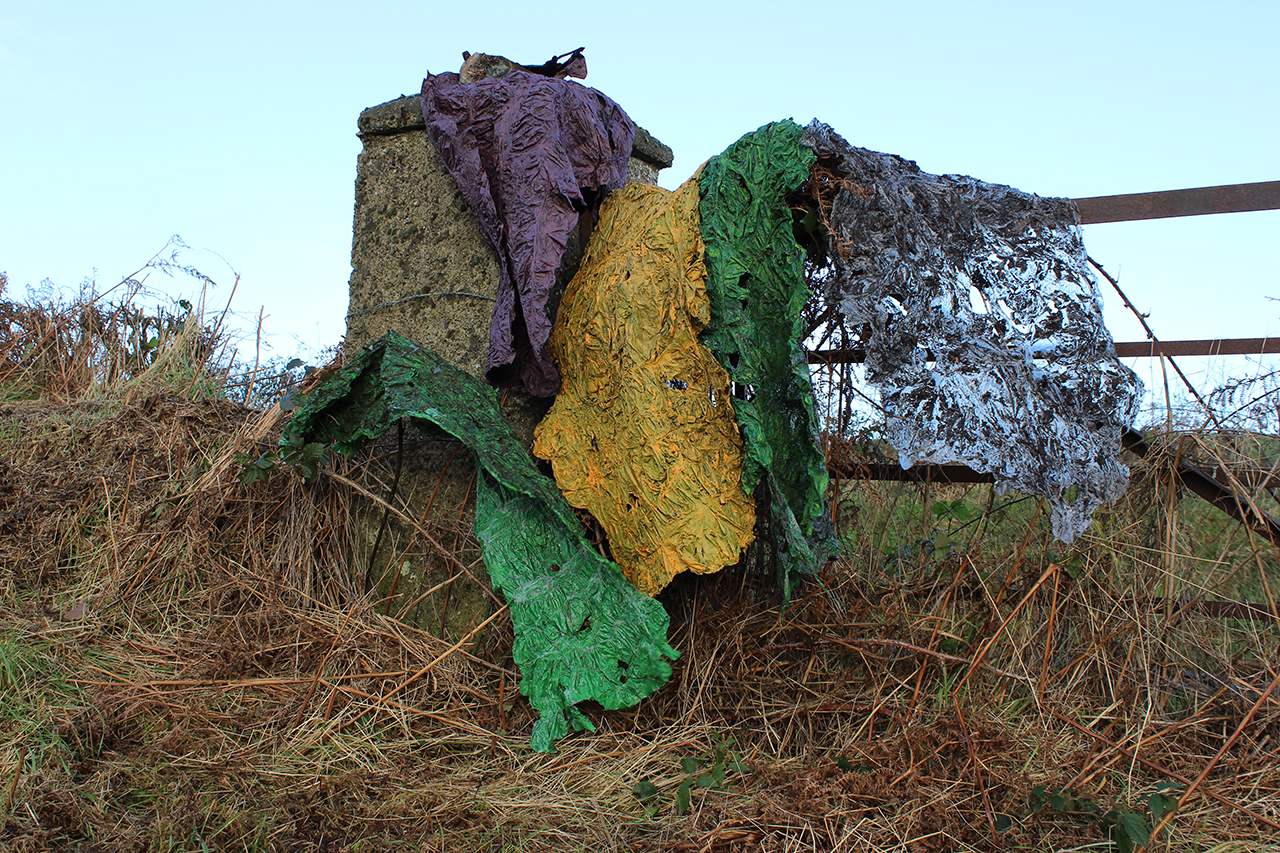
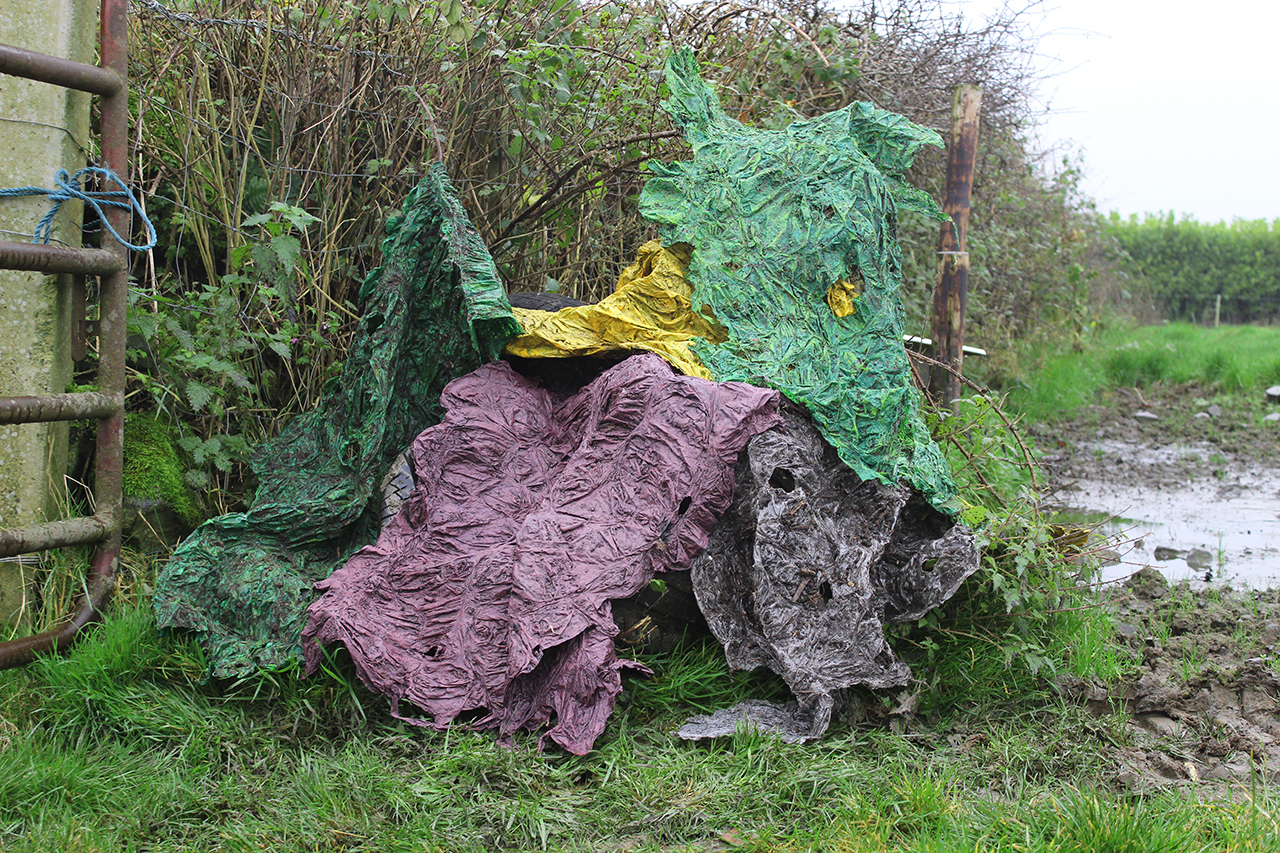
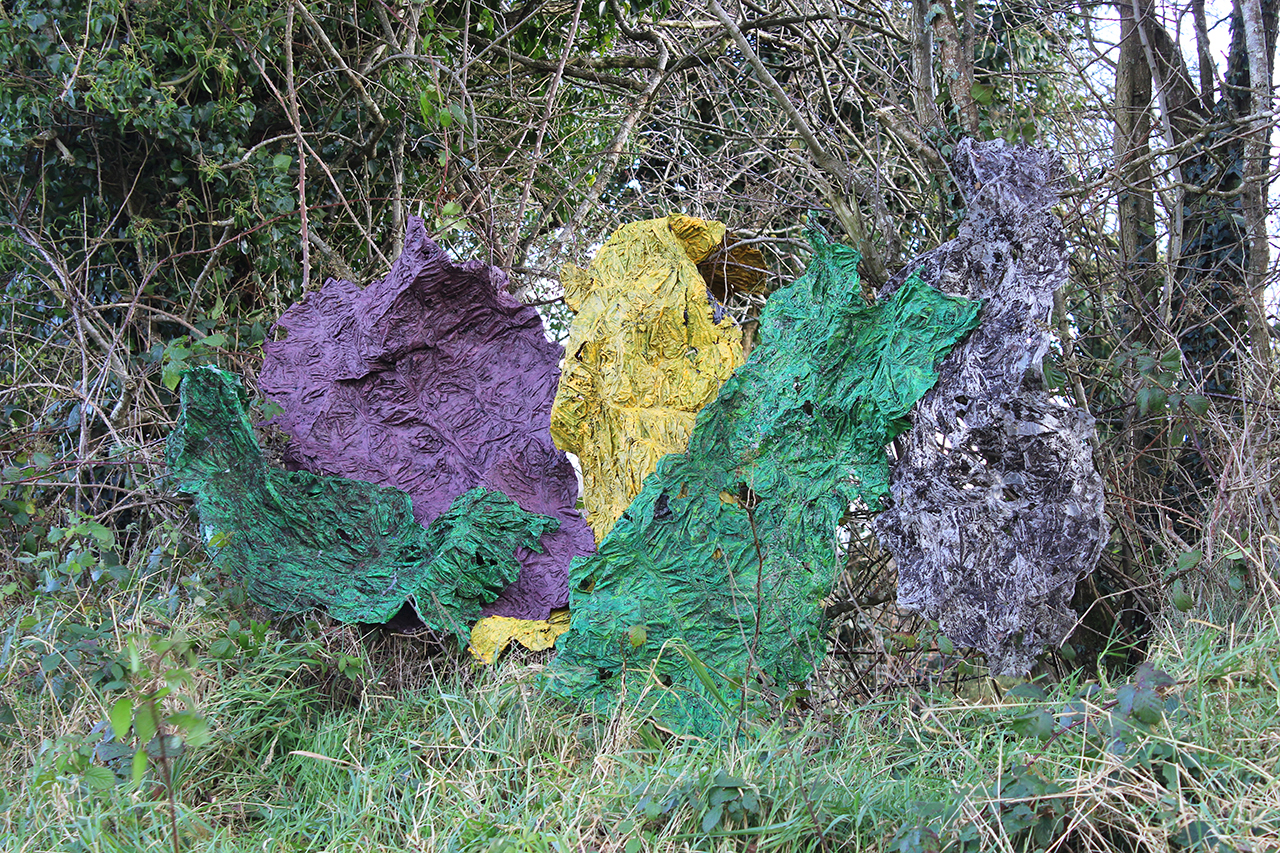
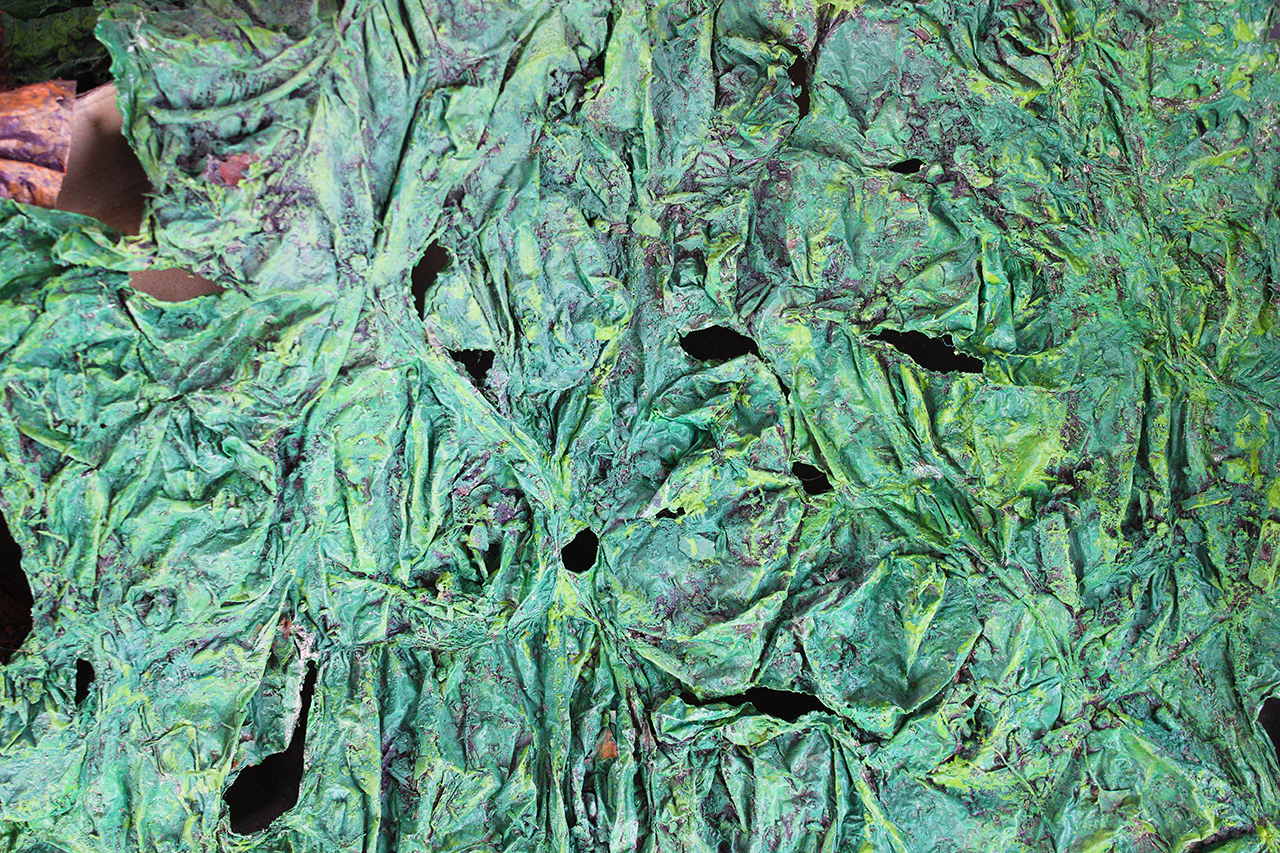
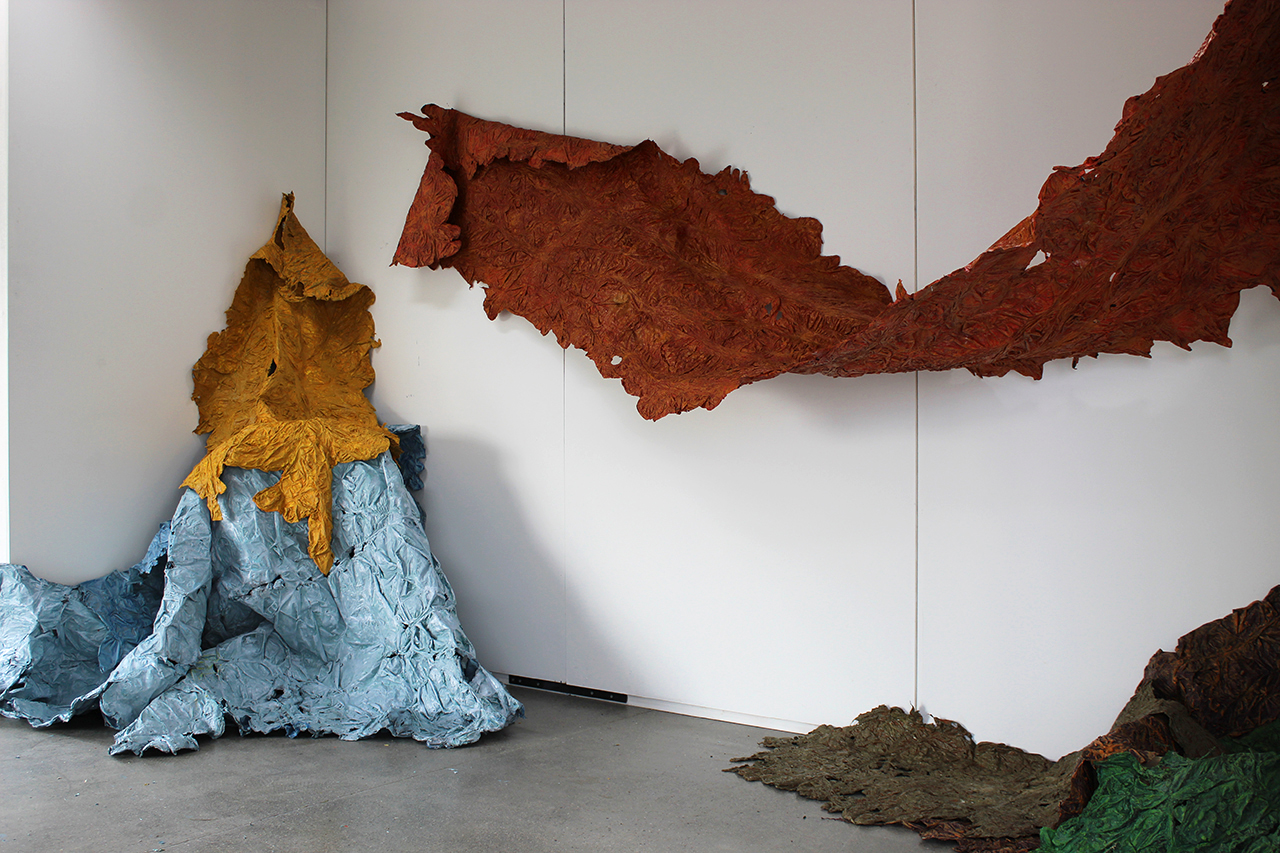
 Home
Information
Archive
Home
Information
Archive